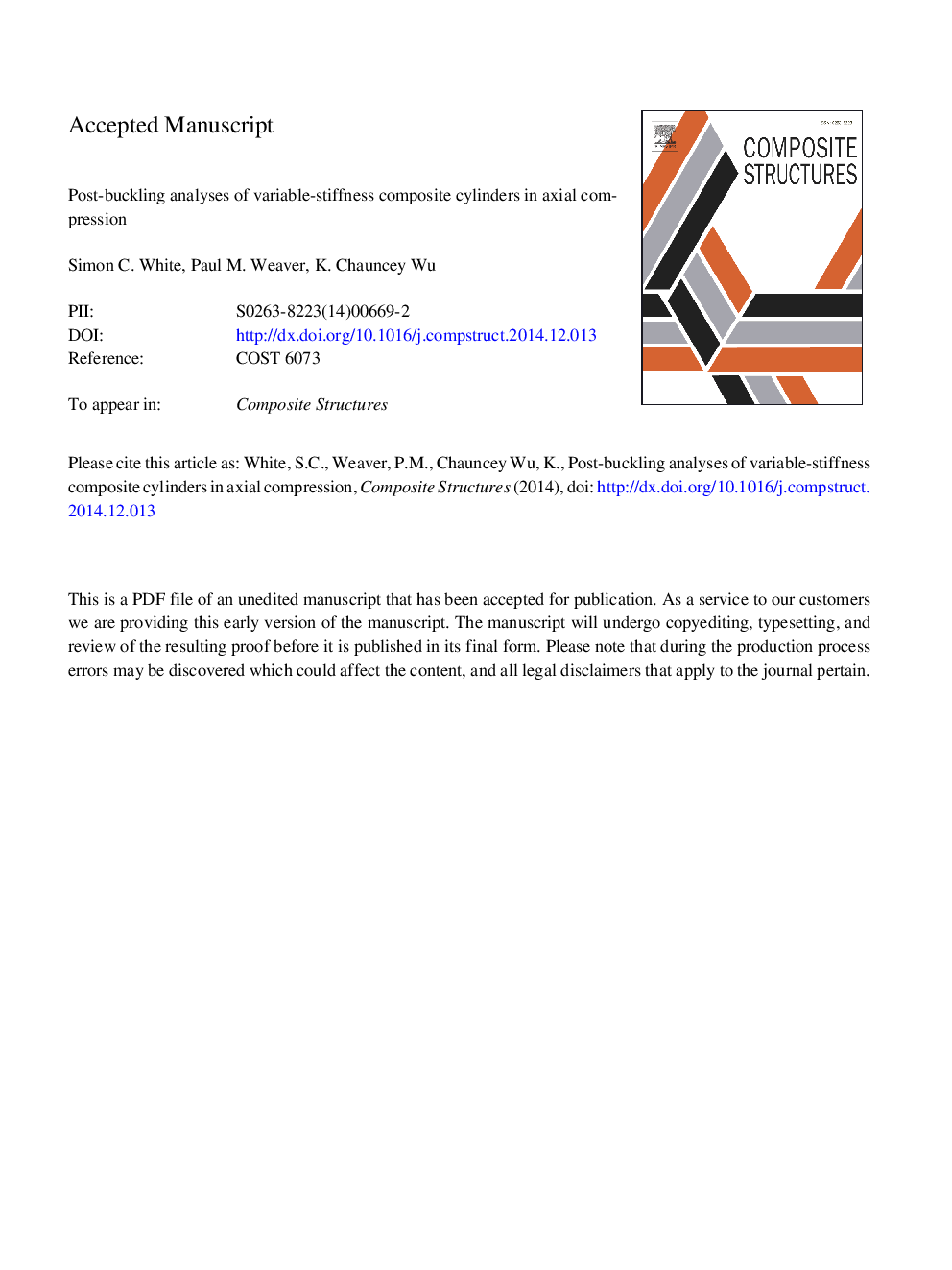| Article ID | Journal | Published Year | Pages | File Type |
|---|---|---|---|---|
| 6707022 | Composite Structures | 2015 | 29 Pages |
Abstract
Variable-stiffness shells are thin composite structures in which the reinforcement direction is a function of its surface co-ordinates. This paper presents a numerical investigation into the buckling and post-buckling of two variable-stiffness cylinders under axial compression. Both shell walls are made from unidirectional carbon fiber slit tapes that are steered to give them a piecewise-continuous fiber-angle variation around the circumference. Dynamic analyses of the complete loading and unloading cycles are computed using a time-integrated finite element model (Abaqus). The numerical results generated herein are compared with test data and are found to be in good agreement, in terms of axial force versus end-shortening and global displacement fields. The analyses provide significant new insight into the mechanisms underpinning collapse behavior of the shells. For example, the development of the initial nonlinear buckle, its dynamic snap-through, and the formation of a post-buckled configuration are clearly visible. One effect elucidated by this investigation is the symmetry-breaking mechanism of the circumferential stiffness variation. In contrast to a constant-stiffness cylinder, in which the total strain energy is invariant to the translation of a dimple of fixed dimensions, the present structures exhibit a single dominant post-buckling mode that are associated with the formation of 'trapped' surface dimples. In one case, this dominant mode is found to be stable over a significant amount of further end shortening.
Related Topics
Physical Sciences and Engineering
Engineering
Civil and Structural Engineering
Authors
Simon C. White, Paul M. Weaver, K. Chauncey Wu,
